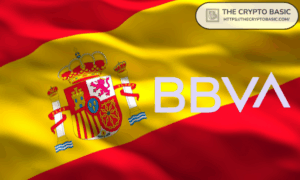Decentralization Over Speed: The Future of DeFi Unveiled

The Future of DeFi: ethereum vs. Solana in 2025
As decentralized finance (DeFi) approaches mainstream acceptance, it faces the challenge of balancing neutrality, security, and efficiency. In 2025, this balance is increasingly influenced by two contrasting architectural frameworks.
The Evolution of DeFi Infrastructure
The development of DeFi has always revolved around a fundamental question: what type of infrastructure should underpin the future of finance? As the sector matures and seeks integration with global financial systems, the urgency to answer this question grows.
Today, this decision extends beyond mere technical considerations. It has become a competition between ethereum’s modular, decentralization-focused architecture and Solana’s high-speed, monolithic design. The outcome of this rivalry will significantly shape the next phase of blockchain finance and influence the architecture of future global financial systems.
ethereum: The Cornerstone of Serious DeFi
ethereum stands as more than just a blockchain; it serves as the foundation for contemporary DeFi. It is a platform where secure and composable applications can flourish, and where long-term financial infrastructure is being established. Institutional investors gravitate toward ethereum for asset tokenization, drawn by its security. The fact that over 55% of total value locked (TVL) across major chains is on ethereum underscores its dominance.
In contrast to Solana’s all-in-one Layer 1 approach, ethereum has adopted a modular scaling strategy. The primary Layer 1 serves as the core, while Layer 2 solutions manage specific tasks like micro-transactions or gaming, alleviating congestion on the main chain. This design maintains decentralization while facilitating scalability. With the introduction of Proto-Danksharding in early 2025, transaction costs on Layer 2 have significantly decreased, reinforcing ethereum’s lead in modular architecture.
However, ethereum‘s model is not without its drawbacks. Its dependence on Layer 2 solutions can lead to fragmentation. Certain DeFi primitives must reside on Layer 1 for optimal composability. While isolated applications like order book decentralized exchanges (DEXs) can operate on Layer 2, these solutions often feel like temporary fixes rather than sustainable designs. True integrated DeFi requires synchronous, on-chain composability, which is most effective when everything functions at the same foundational layer.
ethereum’s most significant advantage lies in its unwavering commitment to decentralization. It is one of the most politically neutral blockchains available—a crucial characteristic in an increasingly regulated landscape. While speed and user experience can be enhanced over time, the principle of decentralization is foundational. Once compromised, it is nearly impossible to restore.
The developer experience on ethereum also provides an edge. Crafting smart contracts on ethereum is considerably more straightforward than on Solana, allowing developers to create secure, well-tested code. This maturity is a key reason why ethereum developers are comfortable making contracts immutable, as they have confidence in the security. It is no coincidence that nearly every major DeFi innovation has originated on ethereum, with over 1,388 deployed protocols compared to Solana’s 232.
When security, composability, and developer confidence align, the entire ecosystem thrives.
Solana: Speed and Efficiency with Centralization Risks
Solana tackles the same scaling challenge from a different perspective. Its monolithic architecture keeps all operations on a single Layer 1, offering distinct advantages: rapid transactions, low fees, and a smooth user experience.
From a performance standpoint, Solana is impressive, capable of processing between 3,000 and 4,000 transactions per second (TPS) today, with projections of exceeding 1 million TPS through the upcoming Firedancer validator. These figures, based on testnet results, are striking compared to ethereum’s average of 15 to 30 TPS.
However, this performance comes with inherent trade-offs. Solana’s design incorporates a leader node that sequences transactions, enhancing throughput but introducing centralization risks. While the network is distributed, it does not achieve true decentralization. This distinction is crucial, especially in a landscape where institutions prioritize political neutrality and resistance to censorship.
Nonetheless, not every application necessitates deep decentralization. For instance, internal central bank digital currencies (CBDCs) or consumer-facing applications in gaming and fintech may find value in Solana’s speed and user experience. It wouldn’t be surprising to see state-adapted versions of Solana deployed in controlled settings.
Despite Solana’s growth, ethereum continues to be the preferred platform for what I refer to as “serious money.”
Structural Integrity vs. Widespread Adoption
The central debate in DeFi for 2025 and beyond revolves around what the sector should prioritize: structural integrity or widespread adoption. Should we focus on building resilient, decentralized, and composable systems, even if they are slower and more complex? Or should we emphasize scalability and user experience at the expense of core crypto principles?
Pursuing adoption without structural soundness is a short-sighted approach. If protocols compromise on security or decentralization, regulators will inevitably impose the same constraints that burden traditional finance. At that point, the promise of DeFi would be lost.
This is why institutional capital continues to favor ethereum—and I believe this preference will persist. Neutrality and security cannot be retrofitted; they must be integrated into the foundational layer from the outset.
If we aspire for DeFi to endure beyond fleeting trends and become the backbone of a new global financial framework, ethereum presents the most robust path forward. It offers the best opportunity to establish financial systems that are resilient, secure, and resistant to co-optation.







